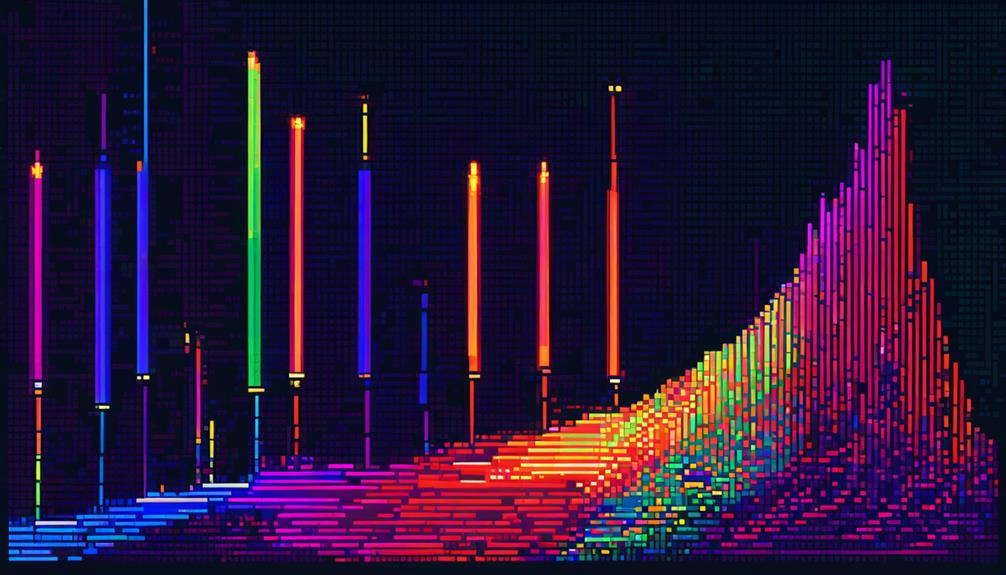Wavelength Division Multiplexing (WDM) in fiber optics has revolutionized the way data is transmitted and has become an integral part of modern communication networks. By utilizing different wavelengths of light to carry multiple signals simultaneously over a single optical fiber, WDM technology has significantly increased the capacity and efficiency of fiber optic systems.
The principles of WDM, including Coarse Wavelength Division Multiplexing (CWDM), Dense Wavelength Division Multiplexing (DWDM), and Enhanced Wavelength Division Multiplexing (EWDM), have enabled high-speed data transmission, long-distance connectivity, and compatibility with existing networks.
The implementation and applications of WDM are vast, encompassing telecommunications, data centers, cable television networks, and more. In this discussion, we will delve into the various aspects of WDM, exploring its principles, systems, applications, and the future potential it holds for ultra-high-speed communication.
Key Takeaways
- Wavelength Division Multiplexing (WDM) allows simultaneous transmission of multiple signals over a single optical fiber.
- There are two main types of WDM: Coarse Wavelength Division Multiplexing (CWDM) and Dense Wavelength Division Multiplexing (DWDM).
- CWDM is suitable for short-distance transmissions, while DWDM is suitable for long-distance transmissions.
- WDM increases the capacity and efficiency of fiber optic networks.
Overview of Wavelength Division Multiplexing

Wavelength Division Multiplexing (WDM) is a technique in fiber optics that enables simultaneous transmission of multiple signals over a single optical fiber by utilizing different wavelengths of light. This technology has revolutionized the telecommunications industry by significantly increasing the capacity and efficiency of optical fiber networks.
There are two main types of WDM: Coarse Wavelength-Division Multiplexing (CWDM) and Dense Wavelength-Division Multiplexing (DWDM). CWDM operates with wider channel spacing, typically around 20 nm, and is often used for short-distance transmissions. DWDM, on the other hand, operates with narrower channel spacing, usually less than 1 nm, and is suitable for long-distance transmissions. DWDM technology is widely used in telecommunications networks, data centers, cable television networks, and metropolitan areas.
The key advantage of WDM is its ability to increase the capacity of optical fibers by transmitting multiple signals simultaneously through different wavelengths. Each wavelength represents a separate channel, allowing for the transmission of multiple independent signals over the same fiber. This efficient use of the optical spectrum results in higher data capacity and bandwidth.
WDM technology enables the transmission of signals over long distances without degradation, as it can compensate for signal loss by using optical amplifiers. It also provides flexibility for network expansion, as new channels can be added by simply assigning unused wavelengths. Furthermore, WDM is compatible with existing equipment, making it a cost-effective solution for upgrading existing networks.
Principles of Wavelength Division Multiplexing
With a clear understanding of the advantages and applications of Wavelength Division Multiplexing (WDM), it is essential to explore the principles behind this transformative fiber optics technology. WDM allows for the simultaneous transmission of multiple signals over a single optical fiber by utilizing different wavelengths of light to carry different signals. Two key technologies within WDM are Coarse Wavelength-Division Multiplexing (CWDM) and Dense Wavelength-Division Multiplexing (DWDM).
CWDM operates with wider spacing between wavelengths, typically in the 1310 nm and 1550 nm wavelength ranges. On the other hand, DWDM utilizes narrower spacing, which enables the support of more channels and operates specifically in the 1550 nm wavelength range. This narrower spacing allows for a higher number of channels to be transmitted simultaneously, increasing the capacity and efficiency of fiber optic networks.
The principles of WDM revolve around the concept of dividing the available wavelengths or frequency range into separate channels for data transmission. These channels are then combined and transmitted over a single optical fiber. To achieve this, WDM systems employ multiplexers, which combine multiple signals onto a single fiber, and demultiplexers, which separate the signals at the receiving end.
WDM systems also rely on optical fiber amplifiers to compensate for any signal loss during transmission. These amplifiers boost the strength of the optical signals without converting them into electrical signals. This allows for long-distance transmission without degradation of the signals.
Coarse Wavelength Division Multiplexing (CWDM) Applications

Coarse Wavelength Division Multiplexing (CWDM) offers several advantages for network scalability and deployment considerations.
With its small number of channels and large channel spacing, CWDM is well-suited for metropolitan areas and fiber-to-the-home applications.
Additionally, CWDM operates at nominal wavelengths ranging from 1310nm to 1610nm and supports single-channel bit rates between 1 and 3.125 Gbit/s. This makes it a cost-effective and energy-efficient solution for specific telecommunications networks and cloud data centers.
CWDM Advantages
The advantages of Coarse Wavelength Division Multiplexing (CWDM) technology are evident in its wider channel spacing, cost-effectiveness, and suitability for shorter transmission distances.
CWDM allows for the simultaneous transmission of multiple signals over a single fiber, significantly increasing transmission capacity. This technology utilizes inexpensive components, reducing the overall cost of deployment and maintenance.
CWDM is transparent to different types of service signals, whether they are digital or analog. It also facilitates the creation of dynamically reconfigurable optical networks, enabling efficient network expansion and upgrades.
Unlike Dense Wavelength Division Multiplexing (DWDM), which has a narrower channel spacing, CWDM is ideal for applications that require shorter transmission distances.
It offers a flexible and cost-effective solution for optimizing optical transmission in various scenarios, making it a preferred choice for many telecommunications providers.
Network Scalability With CWDM
CWDM applications enable network scalability by utilizing wider spacing between wavelengths, allowing for efficient and cost-effective transmission of multiple signals over a single optical fiber. CWDM operates in the 1310 nm and 1550 nm wavelength ranges, providing flexibility for network expansion and upgrades. This technology supports various applications and is widely used in telecommunications and data transmission due to its ability to carry different signals using different wavelengths of light. Coarse Wavelength Division Multiplexing (CWDM) is a cost-effective solution for network scalability, particularly suitable for shorter distances and applications within metropolitan areas. By using CWDM, network operators can increase the capacity of their fiber optic networks without the need for additional infrastructure or costly upgrades. The table below illustrates the CWDM wavelength grid, showcasing the wider spacing between wavelengths compared to DWDM (Dense Wavelength Division Multiplexing).
| CWDM Wavelengths (nm) | Channel Spacing (nm) |
|---|---|
| 1470 | 20 |
| 1490 | 20 |
| 1510 | 20 |
| 1530 | 20 |
CWDM Deployment Considerations
Considerations for deploying CWDM in telecommunications and data center applications include assessing specific distance and data capacity requirements, as well as evaluating the cost-effectiveness and energy efficiency of the solution for the intended applications. When deploying CWDM, the following factors should be taken into account:
- Channel spacing: CWDM operates with wider channel spacing, typically 20nm apart, making it suitable for shorter distances and lower data capacity applications.
- Complexity and cost: The lower number of channels in CWDM reduces complexity and cost, making it a cost-effective solution for specific telecommunications and data center applications.
- Common applications: CWDM is commonly used in metropolitan networks, fiber to the home (FTTH) applications, and in cloud data centers for specific Infrastructure as a Service (IaaS) services.
- Component selection: The wider spacing in CWDM allows for the use of more cost-effective and energy-efficient components compared to DWDM, making it a preferred choice for certain network deployments.
When considering CWDM deployment, it is crucial to carefully evaluate these factors to ensure the optimal performance and efficiency of the solution.
Dense Wavelength Division Multiplexing (DWDM) Systems

Dense Wavelength Division Multiplexing (DWDM) systems offer several advantages, such as increased capacity and flexibility, enabling the transmission of numerous signals simultaneously over a single fiber.
However, implementing DWDM can present challenges, including the need for precise optical alignment and the cost of specialized equipment.
Looking forward, future advancements in DWDM technology may focus on improving spectral efficiency, increasing data rates, and reducing power consumption to meet the ever-growing demand for high-speed communication.
DWDM Advantages and Disadvantages
DWDM systems offer numerous advantages and disadvantages in the field of optical communication.
Advantages of DWDM systems include the ability to transmit high-capacity data over a single optical fiber, increasing network efficiency. They also support a large number of channels, allowing for simultaneous transmission of multiple signals. Additionally, DWDM technology reduces the need for additional fiber infrastructure, saving on costs and resources. These systems are crucial for long-distance transmission, as they maintain signal integrity without degradation. Moreover, DWDM technology is compatible with existing optical networks and equipment, facilitating network expansion and upgrades.
However, there are also some disadvantages to consider. Network management of DWDM systems, particularly with complex up/down path requirements, is still developing and may pose challenges. Interoperability between different DWDM products and traditional systems needs improvement. The immaturity of certain optical devices, such as tunable lasers, can limit network development. Additionally, precise control of wavelength intervals is required to avoid crashes or low utilization rates. Lastly, DWDM systems can be costlier compared to other WDM technologies, impacting deployment in certain environments.
DWDM Implementation Challenges
Implementing Dense Wavelength Division Multiplexing (DWDM) systems comes with a set of challenges that need to be carefully addressed in order to ensure seamless integration and optimal network performance.
One of the main challenges is network management, particularly dealing with complex up/down path requirements, which is still an immature area.
Interoperability between different DWDM products and traditional systems is another challenge that requires improvement to ensure smooth integration.
Moreover, the immaturity of important optical devices, such as tunable lasers, restricts the development and deployment of DWDM networks.
Additionally, the different channel spacing between DWDM and Coarse Wavelength Division Multiplexing (CWDM) technologies poses a challenge, with DWDM having a much narrower spacing.
Controlling wavelength intervals is critical in DWDM implementation to avoid crashes or low utilization rates, making it a significant challenge in the transmission system.
DWDM Future Advancements
As technology continues to advance, the future of Dense Wavelength Division Multiplexing (DWDM) systems holds promising advancements aimed at increasing the number of channels and data capacity for even higher transmission rates.
These advancements will likely focus on improving channel spacing to enable more channels and higher spectral efficiency. Future DWDM systems may also integrate advanced modulation formats to increase data rates per channel and optimize spectral efficiency.
Enhanced signal processing and error correction techniques are expected to improve the overall performance and reach of DWDM systems.
Additionally, quantum technologies and advanced optical components may be integrated into future DWDM systems to achieve even higher data security and transmission reliability.
These advancements in DWDM technology will continue to revolutionize the field of fiber optics and pave the way for faster and more efficient transmission of optical signals.
Wavelength-converting Transponders in DWDM

Wavelength-converting transponders in fiber optic systems play a pivotal role in facilitating the conversion of incoming optical signals to different wavelengths for efficient transmission and network optimization. In the context of wavelength division multiplexing (WDM) and dense wavelength division multiplexing (DWDM) technologies, these transponders are crucial components that enable flexible wavelength routing and management.
One of the main benefits of wavelength-converting transponders is their ability to regenerate optical signals and extend the reach of DWDM systems. By converting the incoming signals to different wavelengths, these transponders can compensate for signal degradation and amplify the optical signals, allowing for longer transmission distances without loss of quality.
Moreover, wavelength-converting transponders offer an important advantage in optimizing network performance. They allow for wavelength conversion without the need for complex and expensive optical-electrical-optical (O-E-O) conversions. This means that data can be transmitted and received at different wavelengths without the need to convert the signals back and forth between optical and electrical forms. This simplifies the network architecture and reduces the cost and complexity of the system.
In addition, wavelength-converting transponders are essential for enabling dynamic wavelength provisioning and grooming in DWDM networks. They provide the flexibility to allocate and manage wavelengths on-demand, allowing for efficient utilization of network resources. This capability is particularly important in today's high-capacity networks, where the demand for bandwidth is constantly increasing.
Reconfigurable Optical Add-Drop Multiplexer (ROADM)
Reconfigurable Optical Add-Drop Multiplexer (ROADM) technology is a critical component in wavelength division multiplexing (WDM) networks, providing dynamic and flexible routing of optical signals. With the increasing demand for high-speed and bandwidth-intensive applications, fiber optics have become the backbone of modern optical communication systems. Wavelength division multiplexing (WDM) technology allows multiple optical signals to be transmitted simultaneously over a single optical fiber, significantly increasing the capacity of the network. Within WDM networks, ROADM technology plays a crucial role in optimizing the efficiency and flexibility of the system.
Here are the key features and benefits of ROADM technology:
- Addition and Removal of Wavelengths: ROADM enables the selective addition and removal of specific wavelengths at intermediate network nodes, allowing for efficient and flexible utilization of network resources. This feature is particularly useful in scenarios where specific wavelengths need to be dropped or added without affecting the others.
- Flexibility and Reconfigurability: ROADM systems support the creation of flexible and reconfigurable optical networks. This flexibility allows network operators to adapt to changing traffic demands and network configurations rapidly. It also enables wavelength agility, which is crucial for implementing dynamic routing strategies.
- Scalability and Resilience: ROADM systems can support multi-degree configurations, allowing for enhanced network scalability. By adding multiple degrees of add-drop functionality, the system can effectively handle increased traffic loads. Additionally, ROADM technology enhances network resilience by providing alternative routes and redundancy options.
- Efficient Resource Utilization: With ROADM technology, network operators can dynamically allocate wavelengths to different paths, optimizing the utilization of available network resources. This flexibility leads to increased efficiency and improved overall network performance.
Optical Cross Connects (OXCs) in WDM Networks

Optical Cross Connects (OXCs) in WDM Networks serve as crucial components for switching and rerouting optical signals at the wavelength level, enabling dynamic provisioning and efficient management of network resources. These OXCs play a critical role in establishing end-to-end optical paths in WDM networks, allowing for remote reconfiguration of network connections without physical intervention. By facilitating wavelength routing and switching, OXCs optimize network resources and enhance the overall performance of WDM systems.
One of the key features of OXCs is their ability to handle a large number of channels in WDM technology. WDM systems utilize different types of optical components to transmit data at varying bit rates and center wavelengths. OXCs ensure that these channels are efficiently switched and routed to their intended destinations.
To achieve this, OXCs employ tight wavelength grids for WDM applications. The grid defines the channel spacing and allows for precise allocation of wavelengths. This ensures that optical signals are transmitted and received without interference, maximizing the data rate and minimizing power consumption.
In data centers, where high-capacity optical networks are crucial, OXCs play a vital role in managing the transmission line. They allow for flexible and dynamic allocation of wavelengths, enabling efficient utilization of the available network resources. OXCs also enable the integration of optical carrier signals from different sources, facilitating seamless connectivity and scalability.
The table below provides a comparison between Coarse Wavelength Division Multiplexing (CWDM) and Dense Wavelength Division Multiplexing (DWDM) in terms of their channel spacing and the number of channels they can support:
| CWDM | DWDM | |
|---|---|---|
| Channel | 20 nm spacing | 0.8 to 1.6 nm spacing |
| Spacing | 8 to 16 channels | 40 to 80 channels |
Enhanced Wavelength Division Multiplexing (EWDM)
Enhanced Wavelength Division Multiplexing (EWDM) revolutionizes fiber optic networks by significantly increasing the number of channels that can be transmitted over a single optical fiber. This technology enhances the capabilities of traditional WDM by utilizing more precise wavelength spacing, allowing for a higher density of channels.
Here are some key features and benefits of EWDM:
- Improved spectral efficiency: EWDM enables the transmission of a greater number of signals with improved spectral efficiency and performance. By optimizing the utilization of optical fiber resources, EWDM offers improved bandwidth and transmission capabilities.
- Enhanced scalability: EWDM systems can support a larger number of channels compared to traditional WDM. This scalability is crucial for accommodating evolving network demands and ensuring future-proof infrastructure.
- Versatile wavelength channels: With EWDM, optical signals are multiplexed in various wavelength channels, allowing for efficient transmission and separation of different data streams. This enables the simultaneous transmission of multiple data signals over the same fiber, increasing network capacity and efficiency.
- Compatibility with add-drop multiplexers: EWDM systems are compatible with add-drop multiplexers, which allow for the extraction of specific wavelengths from the transmission fiber. This flexibility allows for the routing and manipulation of individual wavelengths, enabling network operators to add or remove channels as needed.
Shortwave Wavelength Division Multiplexing (SWDM)

Shortwave Wavelength Division Multiplexing (SWDM) is a technology that utilizes shortwave wavelengths to increase the capacity of fiber optic networks. By transmitting multiple signals over a single fiber using shortwave wavelengths, typically in the range of 850nm to 950nm, SWDM enables cost-effective and efficient utilization of existing multimode fibers within data center environments.
SWDM technology is compatible with existing multimode fiber infrastructure, making it a practical and economical solution for network upgrades. It provides a way to increase the bandwidth of fiber optic networks without the need for expensive upgrades or replacement of existing fibers. This is particularly beneficial in data center environments where high-speed data transmission and accommodating increasing bandwidth demands are crucial.
One of the key advantages of SWDM is its ability to coexist with other wavelength division multiplexing (WDM) technologies such as coarse wavelength division multiplexing (CWDM) and dense wavelength division multiplexing (DWDM). SWDM can be integrated into existing WDM systems, allowing for the transmission of multiple optical signals simultaneously.
To better understand the advantages of SWDM, let's take a look at the following table:
| SWDM | CWDM | DWDM | |
|---|---|---|---|
| Wavelength Range (nm) | 850-950 | 1270-1610 | 1530-1610 |
| Fiber Compatibility | Multimode | Single mode | Single mode |
| Channel Capacity | Up to 40 Gbps | Up to 10 Gbps | Up to 100 Gbps |
| Distance | Shorter distances | Medium distances | Long distances |
As shown in the table, SWDM offers the advantage of utilizing multimode fiber, which is commonly used in data center environments. It also provides high channel capacity and is suitable for shorter transmission distances.
Transceivers Vs Transponders in WDM Systems
In the realm of Wavelength Division Multiplexing (WDM) systems, the distinction between transceivers and transponders plays a crucial role in the efficient transmission and reception of optical signals. Transceivers and transponders are both integral components of WDM systems, but they serve different purposes and have distinct functionalities.
Transceivers are devices that combine the functions of a transmitter and receiver in a single module. They are responsible for the modulation and demodulation of optical signals, converting them to electrical signals and vice versa. Transceivers are commonly used for short-distance communications within a network, such as data centers or local area networks.
On the other hand, transponders are used for long-distance transmission and regeneration of optical signals. They are capable of receiving incoming optical signals, converting them to electrical signals, processing them, and then converting them back to optical signals for transmission. Transponders also provide amplification, reshaping, and retuning of optical signals, ensuring their quality and integrity during long-haul transmission.
Both transceivers and transponders can be used in both Coarse Wavelength Division Multiplexing (CWDM) and Dense Wavelength Division Multiplexing (DWDM) systems. CWDM systems typically operate in the 1310 nm and 1550 nm wavelength ranges, while DWDM systems can utilize a larger number of closely spaced wavelengths in the C and L bands.
The distinction between transceivers and transponders is essential in WDM systems, as it allows for the optimization of optical signal transmission and reception. By understanding their roles and functionalities, network operators can design and implement efficient WDM networks that meet their specific requirements.
Implementations and Applications of Wavelength Division Multiplexing

The implementation and application of Wavelength Division Multiplexing (WDM) technology revolutionizes the capacity and efficiency of fiber optic networks, enabling simultaneous transmission of multiple signals over a single optical fiber using different wavelengths of light. WDM technology encompasses two main variations: Coarse Wavelength-Division Multiplexing (CWDM) and Dense Wavelength-Division Multiplexing (DWDM).
CWDM uses wider spacing between wavelengths, typically operating in the 1310 nm and 1550 nm wavelength ranges. On the other hand, DWDM utilizes narrower spacing and operates in the 1550 nm wavelength range.
WDM systems are crucial for various applications, including telecommunications, data centers, and cable television networks. By multiplexing multiple optical signals onto a single fiber, WDM technology greatly increases the capacity and efficiency of data transmission. DWDM systems, in particular, are equipped with WDM multiplexers that enable the transmission of multiple signals simultaneously over long distances without signal degradation. These systems utilize specific channel spacing and are highly effective in supporting high-speed data transmission.
The benefits of WDM technology are numerous. It allows for increased bandwidth, making it essential for network expansion and the provision of broadband services. WDM also optimizes the utilization of optical fibers, maximizing efficiency and minimizing costs associated with fiber deployment. Furthermore, WDM is compatible with existing networks and equipment, enabling seamless integration and upgradeability.
In recent years, reconfigurable optical add-drop multiplexers (ROADMs) have emerged as an important component of WDM systems. These devices provide flexibility by allowing for the selective addition and removal of specific wavelengths within the transmission window. This capability facilitates network scalability and agility.
Frequently Asked Questions
What Is Wavelength Division Multiplexing in Fiber?
Wavelength division multiplexing (WDM) is a technique used in fiber optic communication systems to transmit multiple signals simultaneously over a single optical fiber. It utilizes different wavelengths of light to carry different signals, increasing the capacity and efficiency of fiber optic networks.
WDM has numerous applications, such as long-haul fiber optic networks and data centers. It offers advantages such as increased bandwidth, efficient use of optical fibers, and the ability to transmit signals over long distances without degradation. However, implementing WDM faces challenges such as signal interference and cost.
WDM also differs from time division multiplexing (TDM), another multiplexing technique.
In recent years, WDM technology has evolved to support higher data rates and greater network capacity. Future trends in WDM include advancements in optical components and increased adoption in various industries.
What Is DWDM and How It Works?
Dense Wavelength-Division Multiplexing (DWDM) is a technology used in telecommunications that allows for the simultaneous transmission of multiple signals over a single optical fiber.
It works by dividing the available bandwidth into smaller channels, each using a different wavelength of light.
DWDM offers several advantages, including increased capacity, longer transmission distances, and improved signal quality.
Optical amplifiers play a crucial role in amplifying the signals in DWDM systems.
However, implementing DWDM networks can be challenging due to factors like signal loss and dispersion.
The evolution of DWDM technology has greatly impacted data transmission, enabling faster and more efficient communications.
DWDM is often compared to other multiplexing techniques, such as Time Division Multiplexing (TDM) and Frequency Division Multiplexing (FDM), but it offers higher capacity and scalability.
The future of DWDM technology is expected to focus on higher data rates, improved spectral efficiency, and the integration of new technologies like software-defined networking (SDN) and network function virtualization (NFV).
Several case studies highlight the successful deployment of DWDM in various telecommunications networks, demonstrating its effectiveness in meeting the increasing demand for bandwidth.
Which Type of Multiplexing Is Used With Fiber Optic Cable?
Fiber optic cables are commonly used in telecommunications due to their advantages in data transmission, such as high bandwidth and low signal loss.
Different types of multiplexing techniques, including wavelength division multiplexing (WDM), are used with fiber optic cables to increase their capacity. WDM utilizes multiplexers and demultiplexers to transmit multiple signals over a single fiber by assigning different wavelengths to each signal.
WDM has challenges and limitations, but its applications in telecommunication networks are widespread, enabling high-speed data transfer and supporting various services.
Ongoing advancements in WDM technology promise further developments and improvements in data transfer speeds.
What Are the 5 Components of Dwdm?
The five components of DWDM are:
- WDM multiplexers
- wavelength-converting transponders
- optical multiplexers
- optical amplifiers
- DWDM terminal multiplexers
DWDM technology has significant applications in the telecommunications industry. It can transmit multiple wavelengths of light simultaneously over a single fiber. This offers several advantages, including increased network capacity, scalability, and cost-effectiveness.
However, implementing DWDM systems can pose challenges related to signal interference and alignment.
Emerging trends in DWDM technology include the integration with other networking technologies and the development of more compact and energy-efficient components.
DWDM is commonly used in long-haul fiber optic networks, enabling high-speed data transmission over long distances. Compared to other multiplexing techniques, DWDM offers superior capacity and flexibility. It has a significant impact on network capacity and scalability, allowing for efficient transmission of large amounts of data.
Looking ahead, the future prospects of DWDM technology in the fiber optics industry are promising. Ongoing advancements aim to improve performance, reduce costs, and meet the growing demand for high-speed connectivity.

